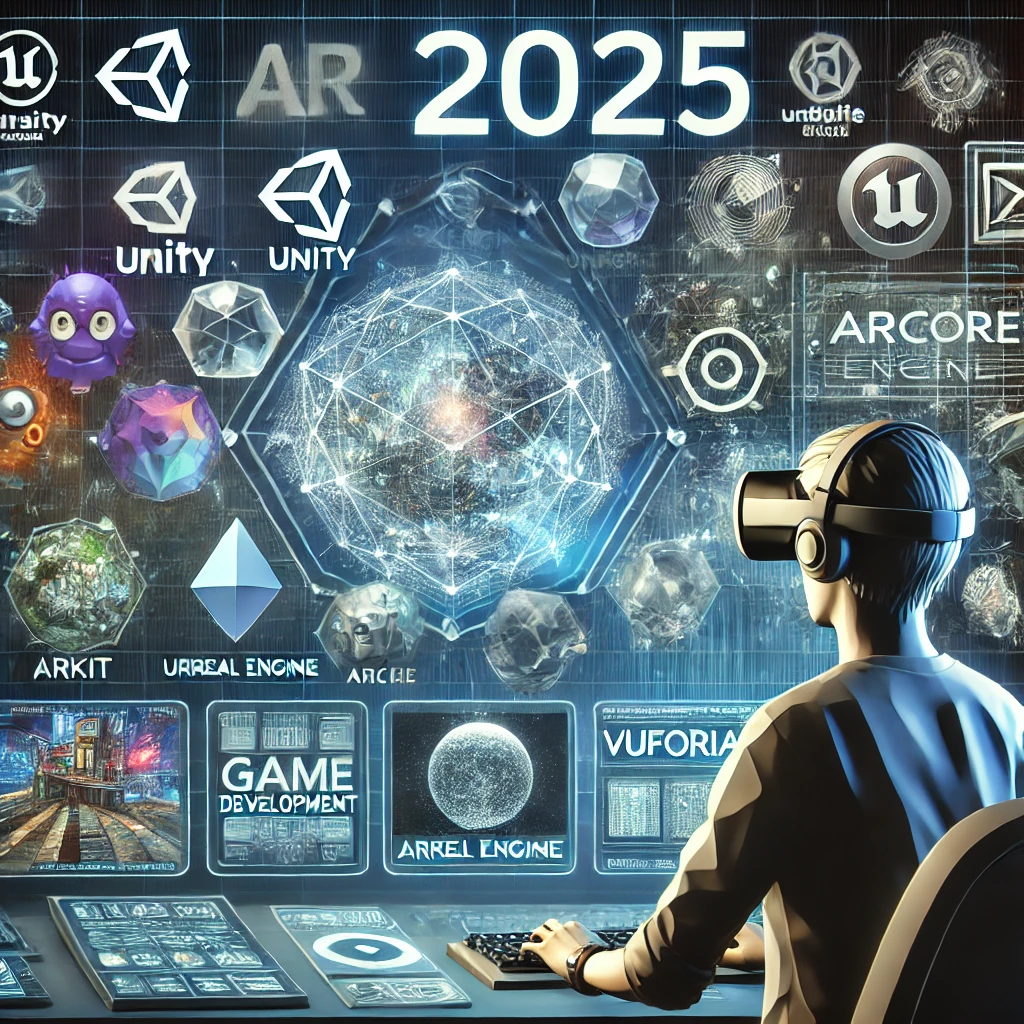Augmented Reality (AR) and Virtual Reality (VR) are revolutionizing the gaming industry, offering immersive experiences like never before. Game developers need powerful tools to create next-level AR and VR games as technology advances. If you’re looking to build cutting-edge games, partnering with a Game Development Company in India can provide the expertise and resources needed. In this blog, we’ll explore the top 10 AR & VR game development tools in 2025 to help developers choose the best platforms for their projects.
1. Unity
Why Choose Unity?
Unity remains one of the most popular game engines for AR & VR development, offering:
- A rich asset store with pre-built AR/VR components.
- Cross-platform support for mobile, PC, and standalone VR devices.
- Integration with ARKit, ARCore, and Oculus SDK.
- A strong developer community and extensive learning resources.
2. Unreal Engine
Why Choose Unreal Engine?
Developed by Epic Games, Unreal Engine is known for its stunning graphics and powerful rendering capabilities.
- Photorealistic visuals using real-time ray tracing.
- Native support for VR platforms like HTC Vive, Oculus Rift, and PlayStation VR.
- Blueprint visual scripting for easier development.
- Optimized performance for high-end VR experiences.
3. ARKit (Apple)
Why Choose ARKit?
For developers targeting iOS devices, ARKit provides a seamless way to create immersive AR applications.
- Advanced motion tracking and face recognition.
- Integration with RealityKit for realistic 3D experiences.
- LiDAR support for precise AR mapping.
- Ideal for developing AR-based games for Apple devices.
4. ARCore (Google)
Why Choose ARCore?
ARCore is Google’s AR platform, designed for Android devices, offering:
- Motion tracking and environmental understanding.
- Light estimation for realistic AR rendering.
- Cross-platform AR development with Unity and Unreal Engine.
- Cloud Anchors for multiplayer AR experiences.
5. Vuforia
Why Choose Vuforia?
Vuforia is a powerful AR development platform that supports both mobile and head-mounted displays.
- Advanced object and image recognition.
- Extended tracking for persistent AR experiences.
- Cloud-based and device-based AR capabilities.
- Easy integration with Unity and other game engines.
6. Microsoft Mixed Reality Toolkit (MRTK)
Why Choose MRTK?
For developers working with Microsoft’s HoloLens and Windows Mixed Reality, MRTK offers essential tools:
- Optimized UI components for immersive interactions.
- Gesture and eye-tracking features for realistic AR/VR experiences.
- Support for cross-platform development, including OpenXR.
- Designed for enterprise and gaming applications alike.
7. Oculus SDK
Why Choose Oculus SDK?
For creating high-quality VR games for Meta’s Oculus headsets, the Oculus SDK is a must-have.
- Full integration with Unity and Unreal Engine.
- Hand tracking and spatial audio for immersive gameplay.
- Performance optimization tools for smooth VR experiences.
- Support for standalone and PC-based VR applications.
8. WebXR API
Why Choose WebXR API?
WebXR allows developers to create AR and VR experiences directly in web browsers.
- Cross-platform compatibility for mobile and desktop.
- No need for app downloads—runs directly in Chrome, Firefox, and Edge.
- Open-source and continuously evolving with web technologies.
- Ideal for creating browser-based AR/VR experiences.
9. Amazon Sumerian
Why Choose Amazon Sumerian?
Amazon Sumerian enables the development of browser-based AR & VR applications without requiring deep coding expertise.
- Cloud-based development with AWS integration.
- No need for specialized hardware—works in standard web browsers.
- AI-powered interactions with Amazon Lex and Polly.
- Useful for educational and training simulations as well as gaming.
Read More: Top 15 Direct Selling Software Development Companies for 2025
10. CryEngine
Why Choose CryEngine?
CryEngine is known for its high-fidelity graphics and realistic physics, making it a great choice for VR gaming.
- Advanced physics and rendering engine for lifelike visuals.
- Full VR support with an optimized workflow.
- Free-to-use model with revenue-based royalties.
- Strong support for first-person shooter (FPS) and simulation-based VR games.
Conclusion
Choosing the right AR & VR game development tool depends on the specific needs of your project. Whether you’re looking for mobile AR experiences, high-end VR simulations, or web-based solutions, these tools provide the best options in 2025. Collaborating with a professional Game Development Company in India can help streamline the development process and bring your vision to life. As AR and VR technology continue to evolve, leveraging these tools will be crucial for delivering immersive gaming experiences.


